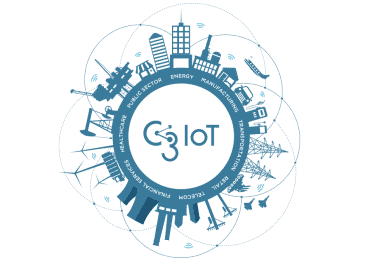
With the scale of cyber threats only widening, threat intelligence powered by AI and ML provides the vigilance needed to thwart cyberattacks.
With the advent of artificial intelligence, the evolution of the world has picked up an exponential pace. Things are changing at such swiftness that it has become a pain in the head for the professionals and watchers to pick up the cues and comprehend the situation completely.
Cyber threats are growing more sophisticated and stealthy by the day. Highly motivated and well-resourced threat actors, including nation-states, cybercriminals, and hacktivists, constantly develop new tactics, techniques, and procedures (TTPs) to infiltrate defenses and exfiltrate sensitive data. No organization, regardless of size or resources, is immune from these evolving attacks. Even those with watertight cybersecurity postures have gaps or overlooked vulnerabilities that clever adversaries can find and exploit.
The Scope of Threat Intelligence
To have any hope of staying ahead of the relentless onslaught of cyber threats, organizations require timely, actionable, and relevant threat intelligence. Threat intelligence entails gathering insights into the latest TTPs used by threat actors, emerging vulnerabilities in technologies and applications, shifts in attacker motivations, and changes in the overall threat landscape. With this external intelligence, security teams can anticipate potential vectors of attack, proactively detect threats, and harden the organization’s defenses before attackers have a chance to strike. Threat intelligence provides the continuous stream of information necessary to maintain visibility and situational awareness as threats evolve.
In today’s fast-moving threat environment, collecting and leveraging intelligence manually is no longer feasible. Thankfully, artificial intelligence (AI) and machine learning technologies are supercharging threat intelligence capabilities. By continually gathering huge volumes of threat data, developing models, identifying patterns, and generating insights much faster than humans can, AI systems enable security teams to make smarter decisions in defending against the latest attack techniques.
See also: 3 Things to Do to Keep Safe from Cybercrimes
Key ways AI and machine learning are transforming threat intelligence
Automated Large-Scale Data Collection and Analysis
Effective threat intelligence relies on collecting and making sense of massive amounts of data from many disparate sources across the internet. These include the dark web, hacker forums and messaging platforms, code repositories, technical blogs, malware sandboxes, intelligence feeds from security vendors, and more. Manually gathering and analyzing so much data is tremendously time-consuming and labor-intensive.
AI and machine learning algorithms automate the collection and aggregation of threat intelligence from these myriad sources at an immense scale. Natural language processing parses text and speech, while machine learning classifiers automatically analyze new malware samples, phishing emails, network traffic, or other threat data based on similarities to known patterns. This enables the real-time detection and alerting of emerging threats spreading through new attack campaigns.
Identifying Campaign Linkages and Named Threat Actors
Attackers frequently reuse pieces of code, exploit leaked tools and vulnerabilities, or reuse infrastructure like command and control servers across multiple campaigns. By applying statistical modeling and network analysis techniques, AI systems can uncover hidden connections scattered across huge volumes of threat data. This allows security analysts to link supposedly disparate attacks to broader coordinated campaigns conducted by specific named threat groups.
Predictive Threat Modeling
Leveraging massive datasets of historical threat information, AI models can generate probabilistic forecasts on how threats are likely to emerge and evolve in the future. Based on learning from past data, algorithms can predict new attack vectors that may arise, types of system vulnerabilities likely to be exploited, shifts in attacker behaviors, and many other potential changes in the threat landscape. As the models ingest more data, the predictions become continually more accurate and valuable for security planning.
Customized Threat Profiles for Each Organization
Not all threats pose an equal level of risk to all organizations. Some industry sectors, geographies, software applications, third parties, or other specific attributes may make an organization more likely to be targeted by certain threat actors using particular techniques. By ingesting and correlating intelligence with internal company data, AI systems can build customized threat profiles. These highlight the most concerning risks organizations face based on their unique threat landscapes. Following third-party risk management best practices leveraging the generative AI is a step in the right direction as attackers often piggyback the shoulders of third parties and vendors.
Automated Threat Monitoring and Real-time Alerting
Manually monitoring the endless forums, sites, and channels where threat actors collaborate and share intelligence is extremely laborious. AI automation enables continuous scanning across these platforms to surface new threats in real time. Natural language processing and machine learning classify content, flagging discussions related to new vulnerabilities, malware variants, or attack methods relevant to the organization. Security teams receive automated alerts through SIEM integration to take immediate action.
Accelerated Incident Response
Despite the strongest defenses, breaches can still occur. When an attack slips through, AI again proves invaluable by accelerating incident response. By cross-referencing vast threat intelligence resources, algorithms help response teams quickly trace the attack’s origin, methodology, and scope. AI can determine what assets were impacted, identify data exfiltrated, and potentially attribute the attack to known threat groups based on TTP. This speeds up containment, remediation, and recovery.
Fighting Back with AI
As much as AI supports cyber defense, attackers are also weaponizing it for their campaigns through automated vulnerability discovery, spear phishing, and malware development. As adversaries ramp up their own AI capabilities, they may even be able to manipulate machine learning models to misdirect, evade, or poison security defenses. To maintain advantage, organizations will need to ensure their AI has sufficient resilience and adaptability to out-learn the enemy. Cybersecurity will become an AI versus AI arms race.
Staying Ahead of the Game
As long as threats continue rapidly evolving, organizations require threat intelligence to see around corners and stay ahead of the game. Partnering human security expertise with AI acceleration will remain crucial to outsmart sophisticated attackers. But AI is no silver bullet. Oversight is mandatory to avoid blind spots, false positives, and misguided actions. Organizations must strategically and ethically integrate AI within existing incident response workflows and ensure alignment with broader security objectives.
Conclusion
With the scale of cyber threats only widening, threat intelligence is no longer optional. It is an essential component for security teams to anticipate evolving threats and adapt defenses before damage occurs. Powered by AI and Machine learning, threat intelligence provides the perpetual vigilance needed to prevail on the cyber battlefield.



























